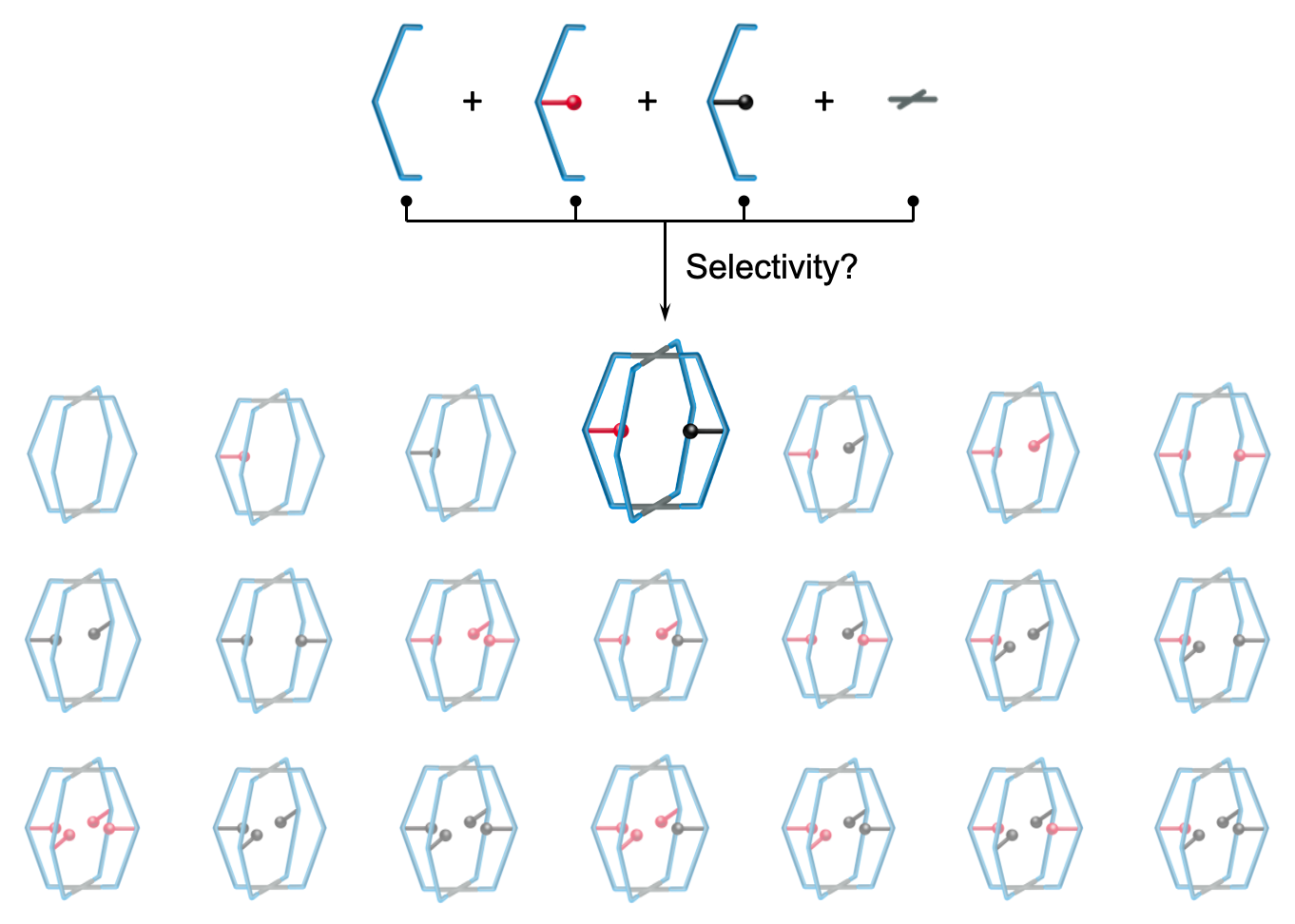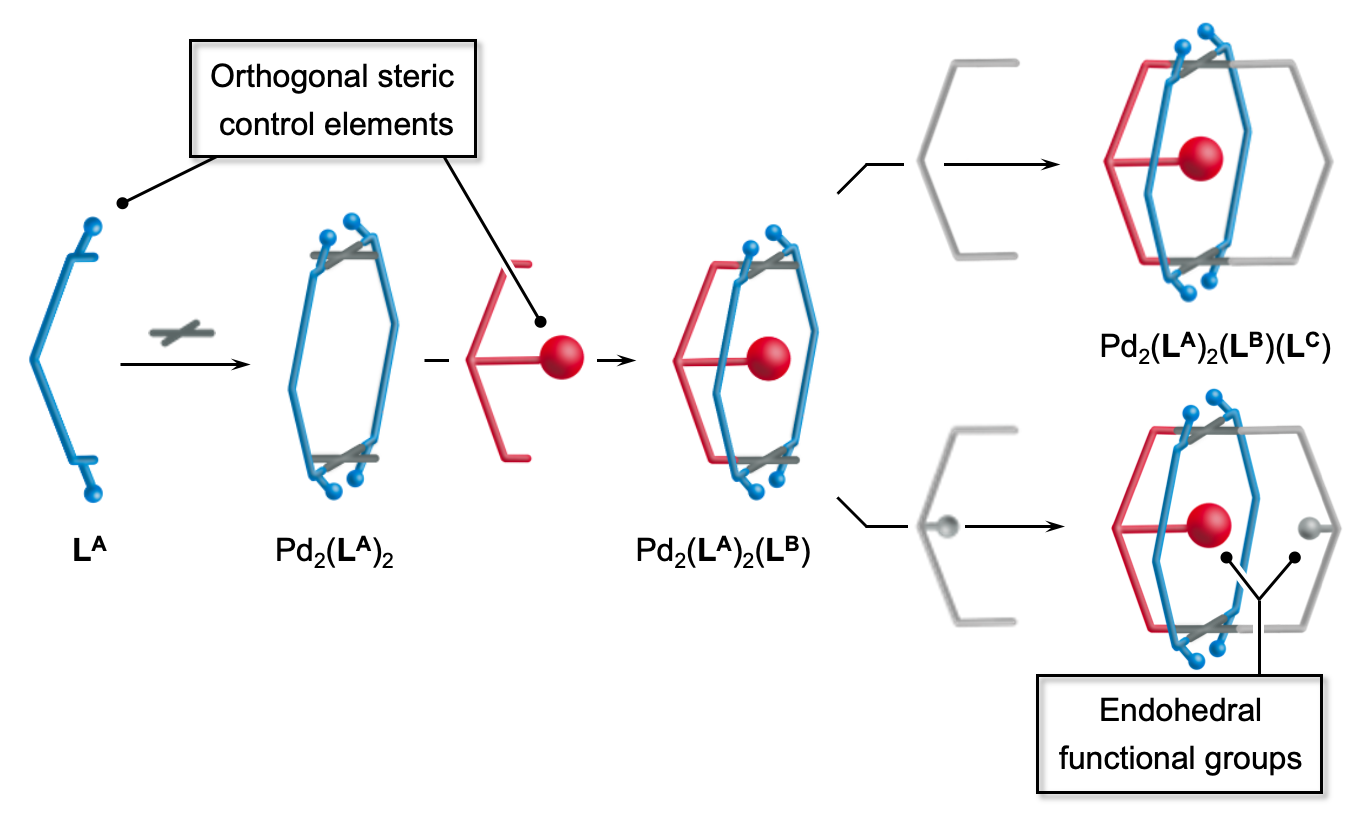Natural enzymes have highly functionalized cavities. The synergistic interplay between distinct amino acid residues is responsible for the recognition ability and the catalytic activity of enzymes. In this context, the construction of endo-functionalized supramolecular structures as enzyme mimic has received increasing attention. The endo-functionalized [Pd12L24] and [Pd2L4] coordination cages represent the most successful systems in this regard. However, site-selective endo-functionalization and introduction of distinct endo-functional groups could not be realized with these systems.
The construction of a [Pd2L4]-type coordination cage decorated by distinct internal functional groups requires the employment of at least three different ligands. However, mixing the required ligands and PdII ion in a propriate ratio will lead to the formation of a statistic mixture. The vast majority of the strategies for the construction of hetero-assemblies reported so far is limited to employing two different types of ligands.

To address this issue, the research group of Qi Zhang from College of Chemistry, Sichuan University reported for the first time the selective construction of a [Pd2L4]-type coordination cage involving three distinct ligands. This strategy allows site-selective endo-functionalization of the heteroleptic coordination cage.
Using two orthogonal steric control elements is the key for the selective formation of the hetero-assemblies in this study. Steric congestion around the coordination site in ligand LA ensures the formation of a ring-shaped intermediate, which reacts with ligand LB carrying a central steric bulkiness to form a bowl assembly. Finally, the addition of a capping ligand LC readily delivers the hetero-cage.

This strategy allows introducing endo-functional groups into supramolecular cavities in a site-selective fashion. As a proof of principle, two singly endo-functionalized hetero-cages were successfully constructed by utilizing LB containing a bulky moiety tethered by a functional group. Moreover, a heteroleptic cage containing two different endo-functional groups was obtained with functionalized LB and LC. The presence of different functional residues in the active sites of enzymes is crucial for the enzymatic activities. This work provides a new solution for the construction of enzyme-like supramolecular host structures and supramolecular catalysts.
This work is published on Angewandte Chemie International Edition, titled as “Controlled Construction of Heteroleptic [Pd2(LA)2(LB)(LC)]4+ Cages: A Facile Approach for Site-Selective endo-Functionalization of Supramolecular Cavities”. Sichuan University is the primary affiliation. Prof. Qi Zhang is the corresponding author. Yan Liu and Shou-Heng Liao are the first co-authors. This work is financially supported by the National NSF of China and Sichuan University.
Link of the article: https://doi.org/10.1002/anie.202217215
